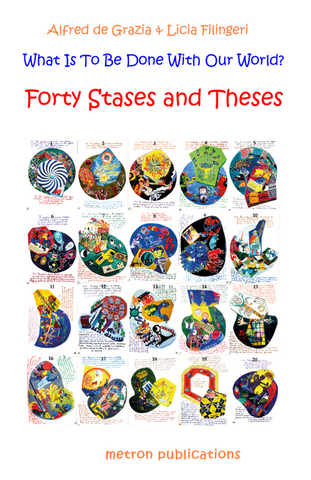40 Stases and Theses: What Is To Be Done With Our World?
by Alfred de Grazia & Licia Filingeri

The "Forty Stases and Theses," stating forty major obstacles to the welfare of our world and of humanity, and proposing forty solutions, first appeared in Alfred de Grazia's "Kalos - What Is To Be Done With Our World?" published in Bombay, India, in 1971. Licia Filingeri, an Italian artist and psychoanalyst from Genoa, belonging to the "Arte Povera" movement, created forty works in acrilyc on paper, each dedicated to one of the obstacles and to the way of resolving it. Her work was finished in Terrile, in Liguria, in 1995, with Alfred de Grazia adding the text of the "Forty Stases and Theses" in his own handwriting. The series was first exhibited at the Horace Mann School, in the Bronx, in New York City. It was also exhibited at the Q-Gallery in Naxos, Greece. Each stasis identifies a trouble or a problem, each thesis offers a solution in the area of the problem. Each painting pairs the stasis with its corresponding thesis, artistically striving for the betterment of the world condition.


